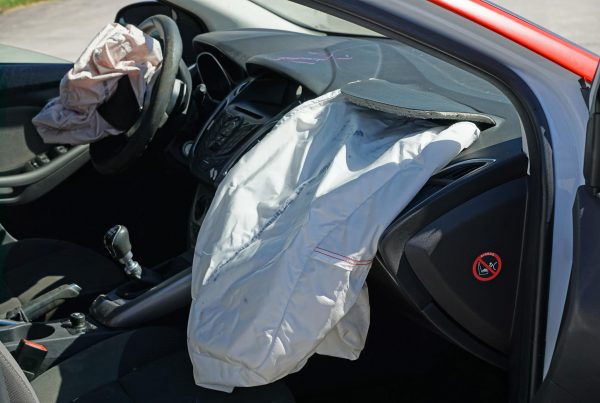In the rapidly evolving electric vehicle industry, staying ahead of competitors is crucial by understanding the latest innovations like NIO’s battery swapping technology. Recently, I spent a day with Mr. Liao, head of operations at NIO, to explore their futuristic battery swap technology. Our discussion spanned a variety of topics, from cutting-edge technologies to the challenges of the EV market. NIO is at the forefront of electric vehicle charging solutions, delivering a revolutionary solution that is set to reshape mobility in Europe and globally.
How is NIO positioning itself in the competitive electrical vehicle market?
NIO aims to lead in the EV market by focusing on premium smart electric vehicles, integrating advanced technology like battery swapping to meet driver needs and wishes. Beyond producing electric cars, NIO builds a holistic ecosystem with innovations such as NIO Power Swap stations and a connected user community that enhances the ownership experience, setting NIO apart from its competitors in the market.
NIO has been at the forefront of innovation in the electric vehicle industry. Could you provide an in-depth look at some of the key technologies that NIO has developed and explain how these technologies differentiate NIO’s vehicles from others in the market?
NIO’s groundbreaking innovations, particularly their battery swapping vs charging technology, allow users to replace their vehicle’s battery in minutes at NIO Power Swap stations. This greatly reduces downtime and alleviates range anxiety, ensuring NIO battery swap technology offers unmatched convenience. Furthermore, their vehicles are equipped with advanced autonomous driving systems and the NOMI AI assistant, which enhances the driving experience by providing personalization and continuous over-the-air updates.
How does battery swapping differ from traditional charging methods?
Battery swapping enables drivers to replace a depleted battery with a fully charged one in under three minutes. This innovative process is significantly faster than even the quickest charging methods available today. EV Insight’s recent survey with French e-drivers indicate that reducing charging times through battery swapping is viewed as a revolutionary step, highlighting the importance of NIO’s innovative approach to battery swapping vs charging.
What are the differences between 3rd and 4th generation battery swapping stations and how they contribute to user experience?
NIO’s battery swap technology has evolved significantly with each generation. NIO’s 3rd-generation Power Swap stations can handle up to 408 swaps daily—a 30% improvement over previous generations. These stations feature LiDAR sensors and advanced chips, allowing faster and more precise swaps. Recently NIO launched their 4th-generation stations, which further reduces swapping time to 144 seconds and supports up to 480 swaps a day. This battery swap technology is critical to enhancing the convenience and sustainability of electric vehicle charging solutions.
How does NIO’s advanced technology contribute to sustainability in the EV industry?
Sustainability is at the core of NIO’s mission. NIO’s battery swap technology extends battery life and reduces waste, contributing to sustainability goals. By managing the entire lifecycle of the battery, from production to recycling, NIO reduces the environmental impact and ensures their electric vehicle charging solutions are more eco-friendly.
How does NIO address consumer needs with its technology?
NIO is dedicated to improving the user experience through its suite of smart features. Their NOMI AI system interacts with drivers in a natural way, enhancing convenience and safety. The Battery-as-a-Service (BaaS) model also provides flexibility by allowing customers to upgrade or change their batteries as needed. This eliminates range anxiety and gives NIO owners greater control over their vehicle’s performance and lifespan, which keep NIO at the forefront of user-centric electric vehicle charging solutions.
What challenges does NIO face in expanding its battery-swapping technology?
Scaling battery swapping on a global level remains a significant challenge. To address this, NIO collaborates with local governments in Europe and China to establish NIO Power Swap stations. Additionally, as technology continues to advance, NIO invests heavily in autonomous driving systems and AI integration to ensure their vehicles remain competitive and innovative in the EV market.
What are NIO’s future plans for advancing autonomous driving?
NIO’s future is deeply connected with autonomous driving. Aiming to integrate high-level automation like the NOMI AI assistant into everyday driving. The focus is on creating a seamless user experience, which will significantly improve safety and convenience, keeping NIO ahead in the field of autonomous driving.
How is NIO innovating in battery technology, and what impact does it have on sustainability?
NIO is leading the industry with innovations in battery technology, particularly through battery swapping. They are investing in research to improve battery chemistries that promise longer ranges and faster charging times. NIO’s approach reduces the environmental impact of battery production by carefully managing the entire battery lifecycle, contributing to a more sustainable future.
What are NIO’s strategies for expanding globally?
NIO is focused on expanding its market presence, particularly in Europe, where demand for sustainable transportation is high. They are planning to introduce not only their electric vehicles but also their entire ecosystem, including NIO Power Swap Stations and the Battery-as-a-Service (BaaS) model. This strategic approach to market expansion includes localized infrastructure development and a strong focus on building community around the brand, allowing them to meet the needs of diverse regions, including potential future expansions into North America.

![[English]](https://evinsights.co/wp-content/plugins/sitepress-multilingual-cms/res/flags/en.png)
![[Spanish]](https://evinsights.co/wp-content/plugins/sitepress-multilingual-cms/res/flags/es.png)






